Sushi is a popular dish enjoyed by many, and one of the key components of sushi is rice. While it may seem like a daunting task, making sushi rice in a rice cooker can make it much simpler. You can make delicious sushi rice quickly with the right ingredients and preparation.
Understanding the importance of sushi rice is crucial to making a delicious sushi roll. Sushi rice is short-grain, sticky, and slightly sweet, with vinegar-based seasoning that gives it a unique flavor. The stickiness of the rice is important because it helps the rice hold together when making sushi rolls. Choosing the right rice is also important, as not everyone is equal.
Key Takeaways
- Using the right rice is crucial to making delicious sushi rice.
- Preparation before cooking is important to ensure the rice is adequately washed and soaked.
- Using a rice cooker can simplify the process of making sushi rice.
Understanding Sushi Rice and Its Importance

Sushi rice is crucial in making sushi, maki, and other sushi-related dishes. This particular type of rice is short-grained and sticky, making it perfect for sushi rolls. The rice is seasoned with vinegar, sugar, and salt, which gives it a distinct flavor and texture.
The importance of sushi rice cannot be overstated. It is the foundation of any sushi dish; without it, the dish would not be complete. The rice holds the sushi roll together and provides the perfect base for the other ingredients.
When making homemade sushi, using the correct type of rice is essential. Regular long-grain rice or any other kind will not yield the desired results. Sushi rice is designed explicitly for sushi making and has the perfect amount of starch and moisture content to make it sticky and hold together.
There are several sushi dishes, including maki, temaki, nigiri, and California rolls, all of which require sushi rice. Maki sushi, for example, is a type of sushi roll that consists of sushi rice and other ingredients, such as fish, vegetables, and avocado, rolled in seaweed. On the other hand, Nigiri sushi consists of a small ball of sushi rice topped with a piece of fish or other ingredients.
Choosing the Right Rice

When making sushi rice in a rice cooker, choosing the right type of rice is crucial. You want rice that is sticky enough to hold together but not so sticky that it becomes mushy.
The quality of the rice you choose is also essential. Look for fresh rice free of debris or foreign matter. It should also have a consistent size and shape, with no broken or damaged grains.
Here are a few things to keep in mind when choosing the right rice for your sushi:
Short-Grain Rice
Sushi rice is traditionally made with short-grain rice, which has a higher starch content than other types of rice. This makes it stickier and better suited for sushi. When shopping for rice, look for varieties labeled as “short-grain” or “sushi rice.”Quality
Short-Grain Japanese Rice
Short-grain Japanese rice is considered by many to be the best type of rice for making sushi. Brands like Nishiki and Kokuho Rose are popular choices. This type of rice is also known as Japonica rice and is characterized by its short, plump grains.
Brown Rice
If you’re looking for a healthier alternative to white rice, brown rice can also be used to make sushi. Remember that brown rice will have a different texture and flavor than traditional sushi rice, so it may not be suitable for all tastes.
Long-Grain Rice
While long-grain rice can be used to make sushi, it is not recommended. Long-grain rice has a lower starch content than short-grain rice, which means it will not stick together either. This can result in sushi that falls apart or is challenging to eat.
Preparation Before Cooking

Before you start cooking sushi rice in a rice cooker, there are a few essential steps you need to follow to ensure that the rice comes out perfectly.
Firstly, it is crucial to choose the right type of rice. Sushi rice is typically made using short-grain rice, which has a high starch content that makes it sticky and easy to shape. It is crucial to purchase the correct type of rice for making sushi. Ensure that you buy short-grain, medium-grain, or sushi rice, as it sticks together better than long-grain rice.
Next, rinse the rice thoroughly to remove excess starch. Place the rice in a fine-mesh strainer and rinse it under cold tap water until clear. This step helps to remove the excess starch and any impurities from the rice, which can cause the rice to be sticky or unevenly cooked.
After rinsing the rice, let it dry in the strainer for 10-15 minutes. This step helps to remove any excess water from the rice, which can cause it to be mushy when cooked.
Once the rice is dry, transfer it to the rice cooker and add the appropriate amount of water. It is important to use the correct amount of water to ensure the rice cooks evenly. The general rule of thumb is to use one and a half cups of water for every cup of rice.
You can use either filtered or tap water, depending on your preference. However, using filtered water can help to remove any impurities that can affect the taste and texture of the rice.
Preparing the rice correctly before cooking is crucial to achieving perfectly cooked and delicious sushi rice. Follow these simple steps, and you will be on your way to making restaurant-quality sushi rice in no time.
Using the Rice Cooker

Making sushi rice in a rice cooker is a convenient and easy way to achieve perfect results every time. Rice cookers are kitchen appliances designed to cook rice automatically without constant monitoring. Using a rice cooker to make sushi rice is straightforward and requires minimal effort.
To start, measure the desired amount of short-grain or sushi rice using a measuring cup or a kitchen scale. Rinse the rice thoroughly with cold water until the water runs clear. This step is crucial to remove excess starch and debris from the rice grains, which can affect the texture and flavor of the final dish.
Next, you’ll need to transfer the rinsed rice to the rice cooker bowl and add the appropriate amount of water. The general rule of thumb is to use a 1:1.25 ratio of rice to water. For example, if you use one cup of rice, add 1.25 cups of water. However, the exact ratio may vary depending on the type of rice and the rice cooker model. Refer to the manufacturer’s instructions for specific guidelines.
Once you have added the water, close the rice cooker lid and turn it on. The rice cooker will automatically switch to the “cook” mode and start cooking the rice. The cooking time may vary depending on the rice cooker model and the amount of rice being cooked. Typically, the rice takes around 20-25 minutes to cook.
When the rice is cooked, the rice cooker will automatically switch to the “keep warm” mode. Let the rice sit in the rice cooker for an additional 10-15 minutes to allow it to steam and absorb any remaining moisture. This step is crucial to achieve the desired texture and consistency of sushi rice.
Finally, remove the rice from the rice cooker bowl and transfer it to a large mixing bowl. Add the sushi vinegar mixture and gently fold the rice until it is evenly coated. Cover the bowl with a damp cloth and let the rice cool to room temperature before making sushi.
Using a rice cooker to make sushi rice is a simple and foolproof method that yields consistent results. At the same time, rice cookers are versatile kitchen appliances that can cook various grains and dishes. With some practice and experimentation, you can master the art of making perfect sushi rice in a rice cooker.
Making the Sushi Vinegar

Sushi vinegar is the key ingredient that gives sushi rice its unique flavor and texture. Making sushi vinegar is a simple process combining rice vinegar, sugar, and salt.
To make sushi vinegar, start by heating rice vinegar in a small saucepan over low heat. Add sugar and kosher salt to the vinegar and stir until dissolved. Keep stirring until the mixture is clear and all the sugar and salt have dissolved. Turn off the heat and let the mixture cool to room temperature.
Once the vinegar mixture has cooled, it is ready to be mixed with the cooked rice. The ratio of sushi vinegar to cooked rice is typically 1:5. This means that for every cup of uncooked rice, you will need 1/5 cup of sushi vinegar.
You can also use seasoned rice vinegar, pre-seasoned with sugar and salt, to make sushi vinegar. This eliminates the need to add sugar and salt separately. However, if you prefer to make your sushi vinegar, it is easy to do so with just a few ingredients.
Seasoning the Rice

To make sushi rice in a rice cooker, you need to season the cooked rice with a mixture of rice vinegar, sugar, and salt. Here’s how to do it:
- First, measure the cooked rice using a rice paddle and transfer it to a large, flat-bottomed bowl called a hangiri. The hangiri is traditionally made of cypress wood, which helps to absorb excess moisture from the rice and prevent it from becoming too sticky.
- Combine the rice vinegar, sugar, and salt in a small saucepan. Heat the mixture over medium heat, stirring constantly, until the sugar and salt have dissolved.
- Pour the vinegar mixture over the rice and use a spatula to fold it into the rice gently. Be careful not to mash the rice or break the grains.
- As you fold the vinegar mixture into the rice, use a fan or a piece of cardboard to cool the rice down. This will help to prevent the rice from becoming too sticky and clumpy.
- Continue folding the rice and vinegar mixture until the rice is evenly coated, and the vinegar has been absorbed.
- Once the rice has been seasoned, transfer it back to the rice cooker using a rice paddle or a spatula. You can also use a measuring cup to portion the rice into individual serving bowls.
By seasoning the rice with vinegar, sugar, and salt, you’ll give it the signature tangy flavor and sticky texture essential for making sushi. With some practice and the right tools, you can easily make perfect sushi rice in your rice cooker every time.
Stovetop Method as an Alternative
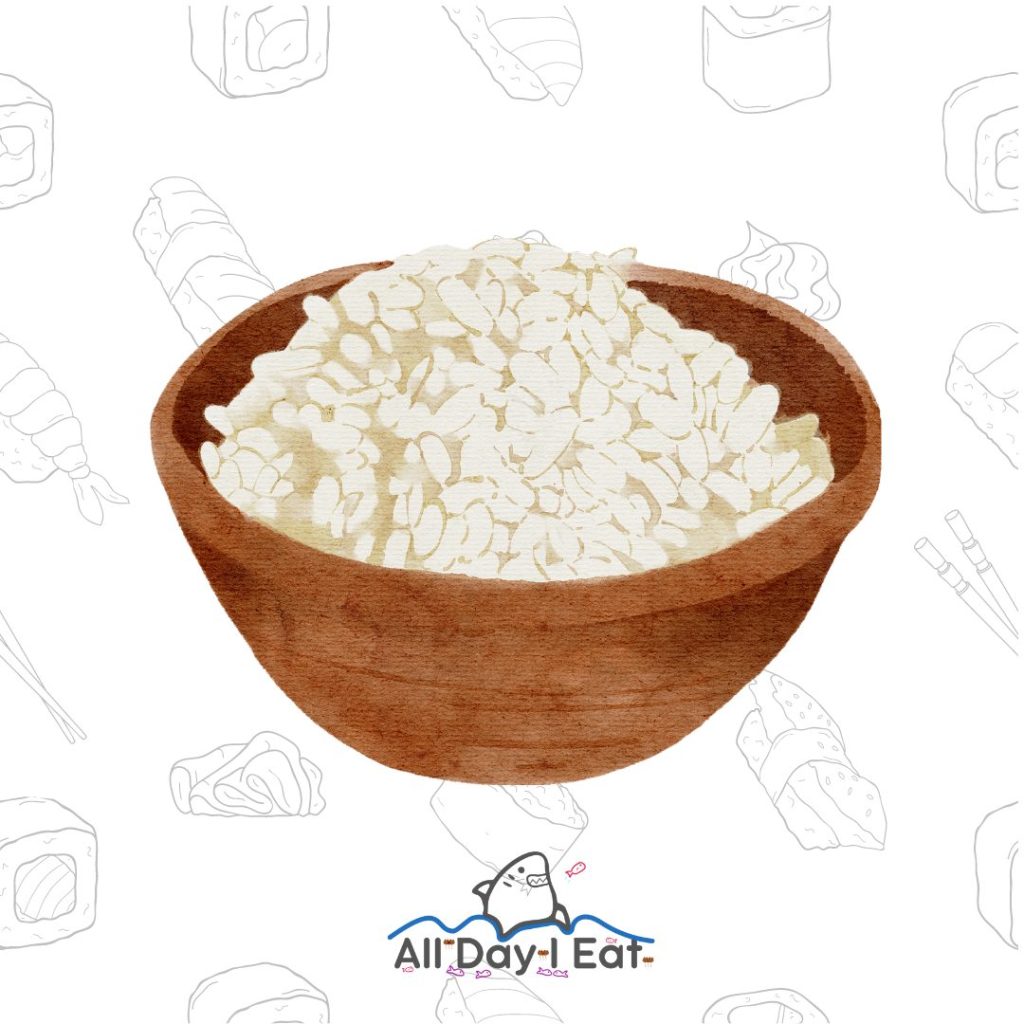
If you don’t have a rice cooker, don’t worry! You can still make delicious sushi rice on the stovetop. The stovetop method is a traditional way of cooking Japanese rice and can be just as effective as a rice cooker.
You will need a heavy-bottomed pot with a tight-fitting lid to make sushi rice on the stovetop. Here are the steps to follow:
- Rinse the rice: Measure out the desired amount of rice and rinse it in a fine mesh strainer until the water runs clear. This helps remove excess starch and ensures the rice cooks evenly.
- Soak the rice: Place the rice in a pot and add water at a ratio of 1:1.1 (one part rice to 1.1 parts water). Let the rice soak for 30 minutes to an hour. This helps the rice absorb water and cook more evenly.
- Cook the rice: Place the pot on the stove over medium-high heat and bring it to a boil. Once boiling, reduce the heat to low and cover the pot with a tight-fitting lid. Cook the rice for 12-15 minutes or until all the water has been absorbed.
- Let the rice rest: Once cooked, remove it from the heat and let it rest for 10-15 minutes with the lid still on. This allows the rice to steam and become fluffy.
- Season the rice: In a separate bowl, mix rice vinegar, sugar, and salt. Gently fold the vinegar mixture into the cooked rice, careful not to mash the grains.
The stovetop method may take slightly longer than a rice cooker, but it is still an excellent option for making sushi rice. Just be sure to keep an eye on the pot and adjust the heat if necessary to prevent burning or boiling over.
Achieving the Perfect Texture
When making sushi rice in a rice cooker, achieving the perfect texture is key. The rice should be sticky enough to hold together when rolled but not so moist that it becomes mushy or clumps together. Here are a few tips to help you achieve the perfect texture:
- Use the right amount of water: When cooking the rice, the amount of water you use can significantly impact the texture. Generally, you want to use a 1:1.25 ratio of rice to water. This means that for every cup of rice, you should use 1 1/4 cups of water. However, the exact amount may vary depending on the type of rice you are using and the specific rice cooker you have. Be sure to check the instructions with your rice cooker for specific guidelines.
- Rinse the rice thoroughly: Before you cook it, please be sure to rinse it thoroughly to remove any excess starch. This will help prevent the rice from becoming too sticky. To rinse the rice, place it in a fine mesh strainer and run cold water over it until it clears.
- Use the right type of rice: When making sushi rice, it’s essential to use short-grain rice, such as Japanese rice. This type of rice has a high starch content, which helps give it the sticky texture ideal for sushi.
- Let the rice rest: After the rice has finished cooking, let it rest for 10-15 minutes before fluffing it with a fork. This will help the rice absorb any remaining moisture and achieve the perfect texture.
Storing and Using Leftover Rice

If you have leftover sushi rice, don’t throw it away! You can store it properly and use it for other dishes. Here are some tips on how to store and use leftover rice:
Storing Leftover Rice
To store leftover sushi rice, transfer it to an airtight container and place it in the refrigerator. The rice should be consumed within two days to ensure freshness. If you want to store it for longer, you can freeze it.
To freeze sushi rice, shape it into small balls or squares and place them on a baking sheet lined with parchment paper. Put the baking sheet in the freezer until the rice balls are firm. Then, transfer them to a freezer-safe container or bag and store them in the freezer for up to a month.
Using Leftover Rice
There are many ways to use leftover sushi rice. Here are some ideas:
- Make fried rice: Heat some oil in a pan and add diced vegetables, meat, and scrambled eggs. Then, add the leftover rice and stir-fry until everything is heated through.
- Make sushi bowls: Top the leftover rice with sliced avocado, cucumber, and pickled ginger. Add some soy sauce and wasabi for flavor.
- Make rice pudding: Combine the leftover rice with milk, sugar, and cinnamon in a saucepan. Cook over medium heat until the mixture thickens and the rice is tender.
- Make onigiri: Shape the leftover rice into small balls or triangles and wrap them in nori. Add a filling of your choice, such as tuna, salmon, or pickled plum.
By following these tips, you can store and use leftover sushi rice to create delicious meals. Just remember to store it properly and consume it within a few days for the best results.
Additional Recipe Tips
Making sushi rice in a rice cooker is a simple process. However, there are a few tips that can help ensure that your sushi rice turns out perfectly every time.
Recipe Tips
- Use sushi rice: When making sushi rice in a rice cooker, it’s essential to use the right type of rice. Sushi rice is short-grained, sticky, and has a slightly sweet taste. Other types of rice, such as long-grain rice, will not work either, and your sushi rice will not have the right texture.
- Rinse the rice: Before cooking it, rinse it thoroughly to remove excess starch. This will help prevent the rice from becoming too sticky and clumpy.
- Use the right amount of water: The ideal ratio of rice to water is 1:1.1. For every cup of rice, you should use 1.1 cups of water. However, this ratio may vary depending on your rice cooker, so follow the manufacturer’s instructions.
- Let the rice rest: After the rice is done cooking, let it rest for at least 10 minutes before using it. This will allow the rice to absorb any excess moisture and become fluffier.



Konnichiwa! (Hello!) I'm Pat Tokuyama, a Japanese tofu cookbook author, who travels for music, food, and adventure. If you like Japanese tea, checkout some of the newestorganic japanese tea, matcha bowls and noren and more!
** Curious about the Plant Based Japanese Cooking Club? ** Learn more here!
Soy Sauce
Soy sauce is a common condiment used in sushi dishes. It’s a salty, savory sauce that adds depth of flavor to sushi rice and other ingredients. When using soy sauce, keep the following tips in mind:
- Use low-sodium soy sauce: Soy sauce is high in sodium, which can harm your health if consumed in large amounts. To reduce your sodium intake, use low-sodium soy sauce instead.
- Dip sparingly: When dipping sushi into soy sauce, use a small amount. You want to avoid overpowering the delicate flavors of the sushi with too much soy sauce.
- Mix with wasabi: To add some heat to your soy sauce, mix in a small amount of wasabi. This will create a spicy, tangy sauce that pairs well with sushi.
Conclusion
The appropriate type of rice is crucial for perfect sushi rice in a rice cooker. Short-grain Japanese rice is preferred, but you can use other varieties. Choose high-quality, debris-free rice, and avoid long-grain rice that is sticky enough to hold together but not so sticky that it becomes mushy.


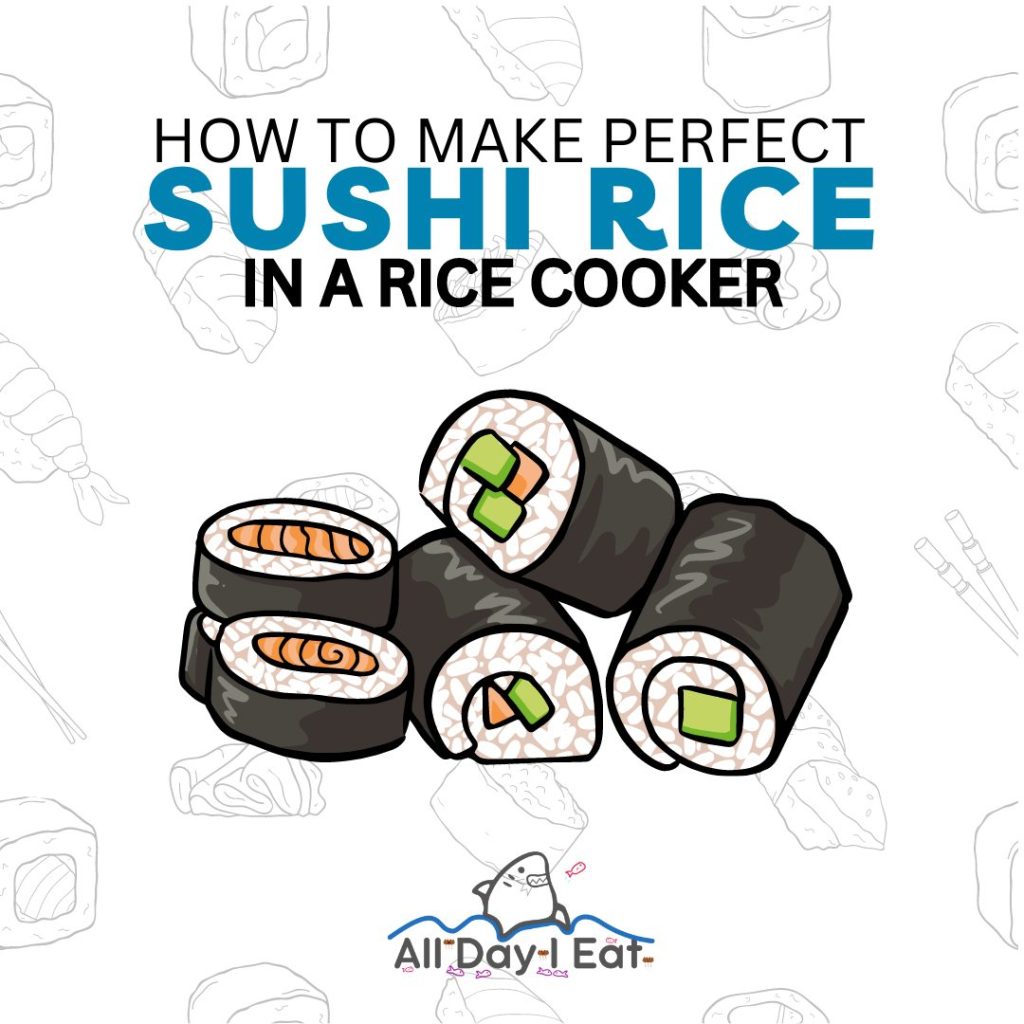

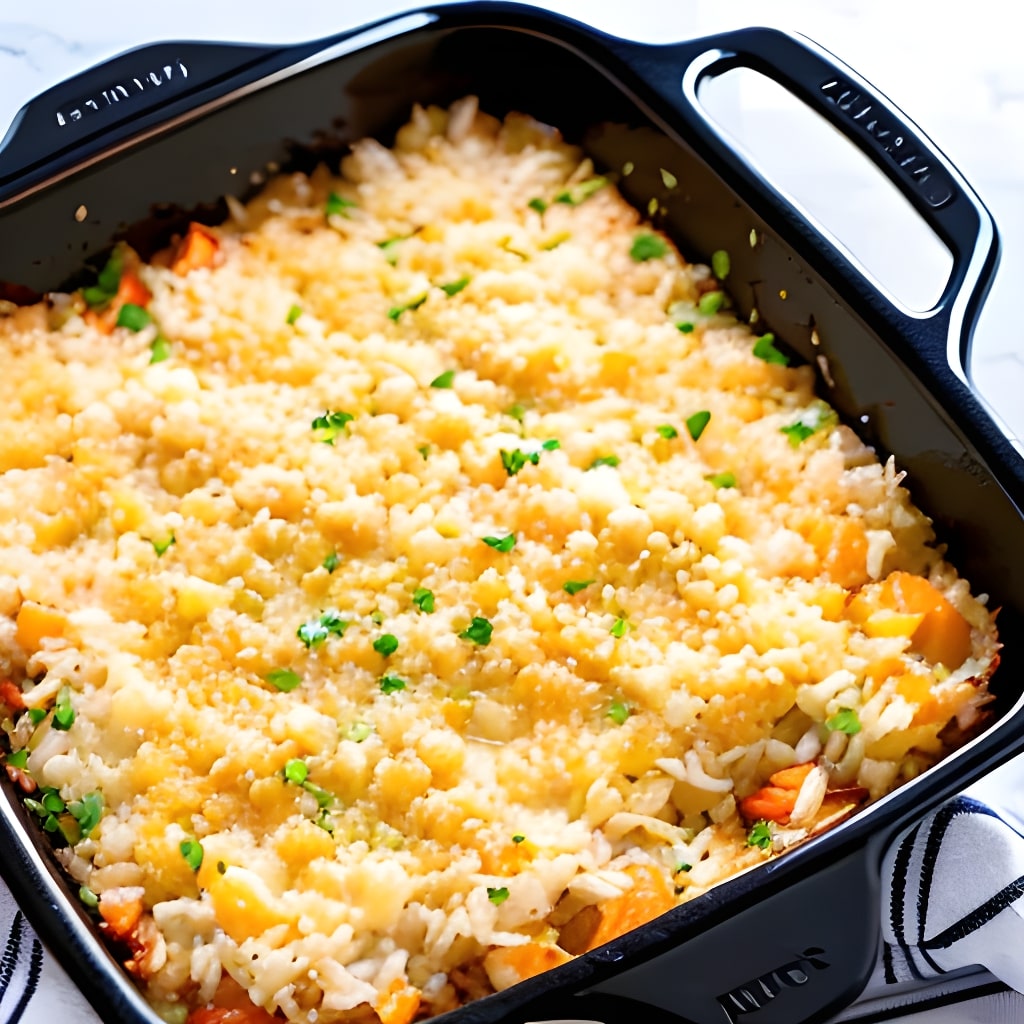
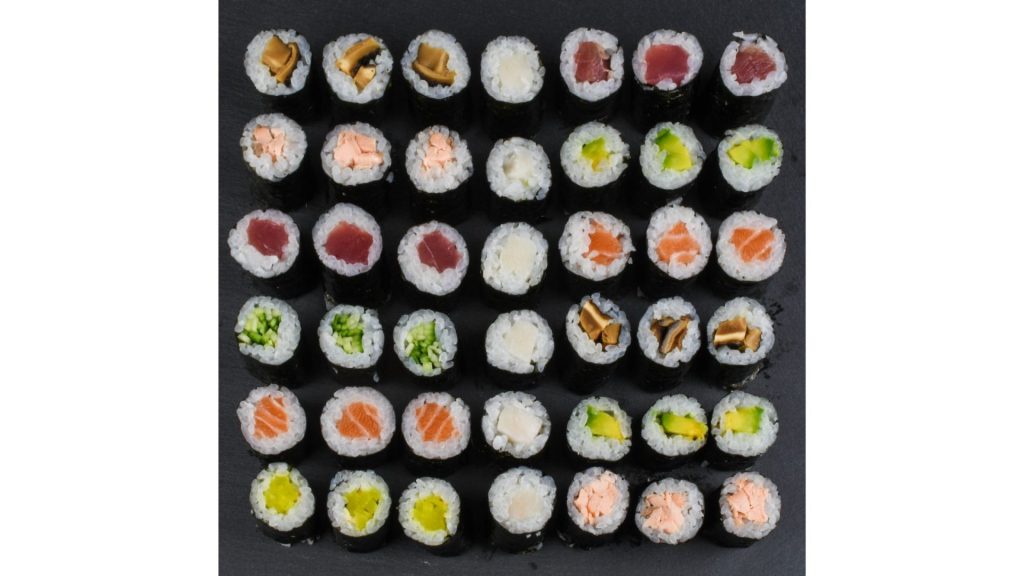
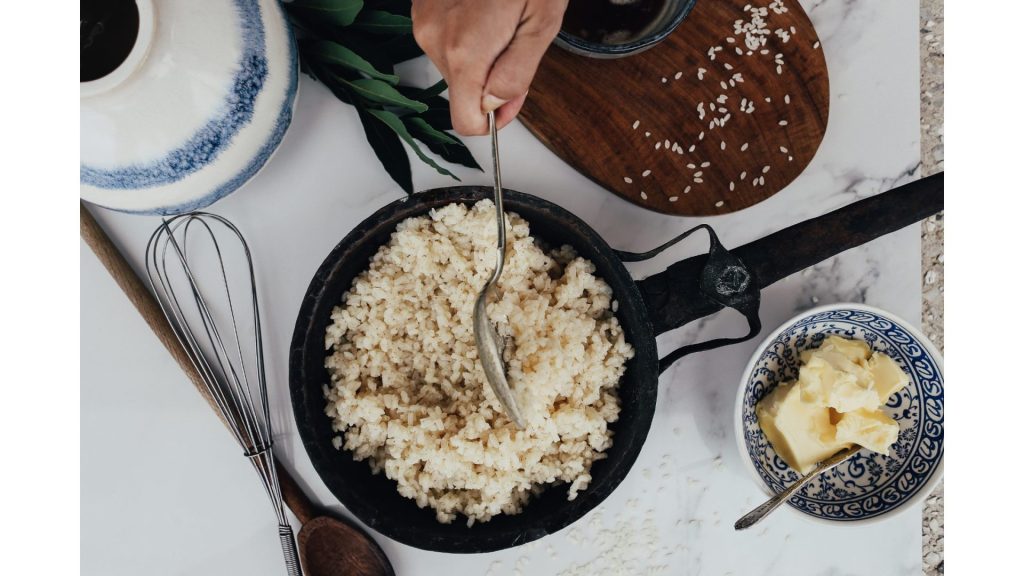
Konnichiwa! (Hello!) I'm Pat Tokuyama, a Japanese tofu cookbook author, who travels for music, food, and adventure. If you like Japanese tea, checkout some of the newestorganic japanese tea, matcha bowls and noren and more!
** Curious about the Plant Based Japanese Cooking Club? ** Learn more here!